
WHAT IS IMPORTANT WHEN CHOOSING INSULATION MATERIALS?*
Today's market is flooded with an abundance of product offerings, and the same holds true for insulation materials. Manufacturers strive to outdo one another with increasingly better specifications. For some, the primary criterion is the thinnest insulation material, for others, the quietest, while some prioritise affordability above all else. In this article, we will address several fundamental questions regarding the selection of insulation materials. We will present what you should pay particular attention to when choosing your insulation material.
WHAT ARE THE IMPORTANT PROPERTIES OF INSULATING MATERIALS?
When choosing insulation materials, 10 important properties should be considered to ensure their effectiveness and suitability for the intended application. Among the crucial aspects are:
 1. Thermal Resistance (R-value)
1. Thermal Resistance (R-value)
The ability of the material to resist heat transfer. Higher R-values indicate better insulating properties. Products with the highest R-value include phenolic boards from companies like Kingspan and Xtratherm (Unilin), offering this coefficient at levels as high as 6.00m²K/W. On the other hand, insulation products with the lowest R-value are EPS (expanded polystyrene) or XPS (extruded polystyrene), which, at the same material thickness, provide a coefficient that is half as much, at 2.85m²K/W. On the other hand, Styrofoam (polystyrene) is exceptionally easy to install and work with, and it belongs to the more cost-effective options within its category. Moreover, it exhibits remarkable resistance to water exposure.
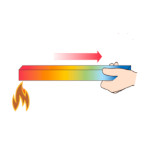 2.Thermal conductivity
2.Thermal conductivity
Low thermal conductivity means the material is a good insulator, as it reduces the flow of heat. Generally speaking, when we touch a material, we should feel as little temperature difference as possible. If we sense even a slight increase or decrease in temperature, it indicates that we are dealing with a material with high thermal conductivity (the lower, the better) as an insulator. Products with low thermal conductivity include Xtratherm SR/PR phenolic boards with a coefficient of 0.021W/mK. On the other hand, materials with high thermal conductivity include polystyrene and mineral wool with a coefficient of 0.034W/mK. To summarise, all insulation products with thermal conductivity lower than 0.022W/mK are considered excellent insulation materials.
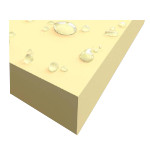 3.Moisture Resistance
3.Moisture Resistance
Insulation materials should indeed exhibit resistance to moisture to avoid water absorption, which could potentially undermine their insulating properties. In this regard, XPS (Extruded Polystyrene) boards emerge as the clear winner, as their Long term water absorption by immersion (%) (EN 12087) is WL(T)0.7. On the other hand, glass wool is known to have the highest water absorbency among insulation materials.
 4.Fire Resistance
4.Fire Resistance
Depending on the specific application, fire-resistant insulation can be crucial for ensuring safety. The best fire-resistant insulation materials are Rockwool stone wool boards, which achieve a classification of A1, signifying total fire resistance. On the other end of the spectrum, polystyrene can be considered one of the least fire-resistant insulation materials, as it falls into the fire resistance classes E and F, making it the weakest in this ranking.
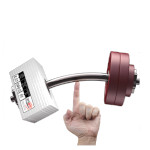 5.Density
5.Density
Materials with higher density do indeed possess greater hardness, increased resistance to water penetration, and demonstrate superior insulation properties. When seeking insulation products that will be subjected to significant static loads, XPS (Extruded Polystyrene) with a density of 35kg/m³ would be the best choice. Alternatively, PIR (Polyisocyanurate) boards from Xtratherm or Celotex, with a density of 30-32kg/m³, would also be excellent options for this application. On the other hand, using glass mineral wool, which has a density of only 10kg/m³, would not be a justified choice in this scenario.
 6.Environmental Impact
6.Environmental Impact
Indeed, it is essential to consider eco-friendly materials that have minimal environmental impact during their production and disposal. As a general rule, insulation materials are manufactured using petroleum-based resources or natural components like rock. However, there are specific locations or situations where the use of petroleum-based insulation products may be undesirable.
In such cases, the best choice is to opt for mineral wool, which contains fewer chemical substances and is a completely breathable insulation material. Although its installation can be challenging for individuals, it remains an environmentally friendly option that supports sustainable practices and contributes to reducing overall environmental impact.
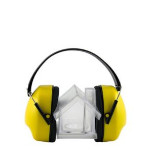 7.Soundproofing
7.Soundproofing
Some insulation materials can also reduce sound transmission, which is important in certain applications. The most effective material for soundproofing walls and ceilings is Rockwool insulation with a density of 100kg/m³. The "100kg range" insulation gets its name from its density, which is 100 kg per cubic metre. This type of insulation is commonly used in places such as hospitals, auditoriums, stadiums, commercial spaces, and doctor's offices where sound control is crucial.
On the other hand, expanded polystyrene is the least effective soundproofing insulation material and is rarely used for sound insulation purposes. Its primary applications are typically focused on thermal insulation rather than soundproofing due to its limited sound-dampening capabilities.
 8.Durability
8.Durability
The longevity of the material is crucial, especially in areas prone to wear and tear.
The winners in the category of durability are PIR boards from companies such as Celotex, Xtratherm (Unilin), Kingspan, and Recticel. These boards are known to withstand several decades without issues, as long as they are not exposed to extreme weather conditions or direct sunlight.
Phenolic boards similarly boast a long lifespan, but there have been cases where they caused corrosion when in contact with metal.
On the other hand, glass mineral wool can settle and compress under its own weight if not installed properly, leading to unwanted thermal bridging. Insulation materials known as styrofoam (expanded polystyrene), unfortunately, attract rodents, making them an ideal nesting place for pests.
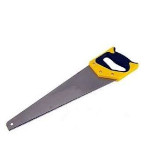 9.Installation
9.Installation
The installation of insulation materials should not cause significant difficulties for builders or individuals doing it themselves. The easiest material to work with and install is polystyrene, which is lightweight and can be cut easily, even with a knife. On the other hand, the most challenging material to install is PIR board, as its cutting requires significant skill and often professional tools. Additionally, mineral wool has been known to cause inconvenience to installers worldwide due to its itching and irritating properties for the skin. For more info on how to cut those insulation products click below:
HOW TO CUT A PIR INSULATION BOARD?
HOW TO CUT FIBREGLASS INSULATION?
 10. Cost
10. Cost
Balancing cost-effectiveness with desired properties is crucial in making the right choice for a given project.The most common criterion when choosing insulation materials is their price. In this regard, phenolic boards are always the most expensive option, costing £38 per square meter at a thickness of 100mm. In comparison, polystyrene at the same thickness costs £19 per square meter, which is nearly 1/3 less than phenolic boards. However, considering the fact that we insulate our homes once in a lifetime, saving costs at this stage may seem unjustified, especially when taking into account that energy and gas expenses are continuously increasing every year.
WHAT FACTORS SHOULD CONSIDER WHEN SELECTING AN INSULATION MATERIAL FOR HEAT TRANSFER APPLICATIONS?
When selecting an insulation material for heat transfer applications, several important factors should be considered:
Thermal Conductivity
Choose a material with low thermal conductivity to minimize heat transfer through the insulation.
R-value
Check the R-value of the material, as it represents its resistance to heat flow. Higher R-values indicate better insulating properties.
Application Temperature
Ensure the insulation material can withstand the temperature range of the application without losing its effectiveness.
CONCLUSION
In conclusion, selecting the right insulation material for heat transfer applications is crucial for optimising energy efficiency and maintaining thermal comfort. Factors such as thermal conductivity, R-value, application temperature, environmental impact, moisture resistance, fire resistance, durability, compatibility, ease of installation, and cost should be carefully evaluated.
Choosing a material with low thermal conductivity and a higher R-value will effectively reduce heat transfer. Additionally, considering the material's ability to withstand the specific application temperature and its impact on the environment helps ensure long-term performance and sustainability.
For applications prone to moisture exposure or fire hazards, selecting materials with appropriate resistance becomes paramount for safety and functionality. Durability is essential to ensure that the insulation remains effective over its intended lifespan, while compatibility with the structure or system being insulated simplifies the installation process.
Cost is an essential consideration, but it should be balanced with the insulation material's overall performance and benefits. By taking all these factors into account, one can make an informed decision and choose the most suitable insulation material to achieve optimal heat transfer management and energy efficiency for their specific needs.
Related articles:
HOW TO CUT A PIR INSULATION BOARD?
HOW TO CUT FIBREGLASS INSULATION?
*All the information provided in the content published on Insulationgo blog is for informational and educational purposes only. Insulationgo LTD makes every effort to ensure the accuracy and timeliness of the content, but we do not assume any responsibility for any errors or omissions.
The information presented on this blog should not be considered as professional advice or a substitute for consulting relevant experts. Before making any purchase decisions or taking action based on the information presented here, it is strongly recommended to contact the product manufacturer directly to verify the details and ensure its suitability for your specific needs.
By using this blog, you acknowledge and agree that Insulationgo LTD shall not be held liable for any damages, losses, or inconveniences arising from the use or reliance on the information provided herein. This limitation of liability applies to all users of the blog, including but not limited to visitors, readers, and subscribers.










































































































